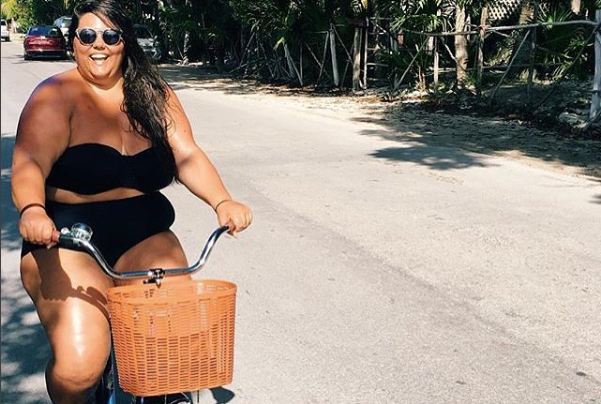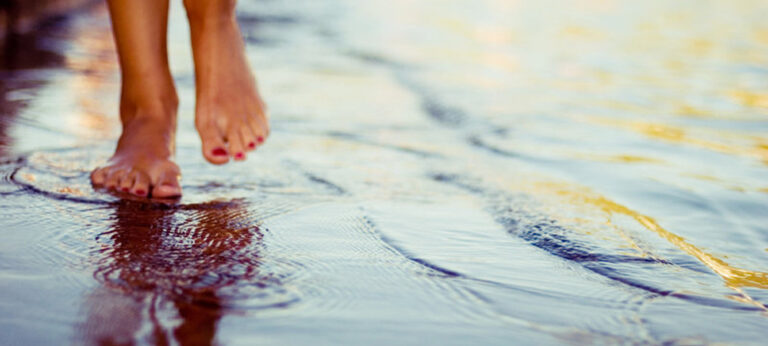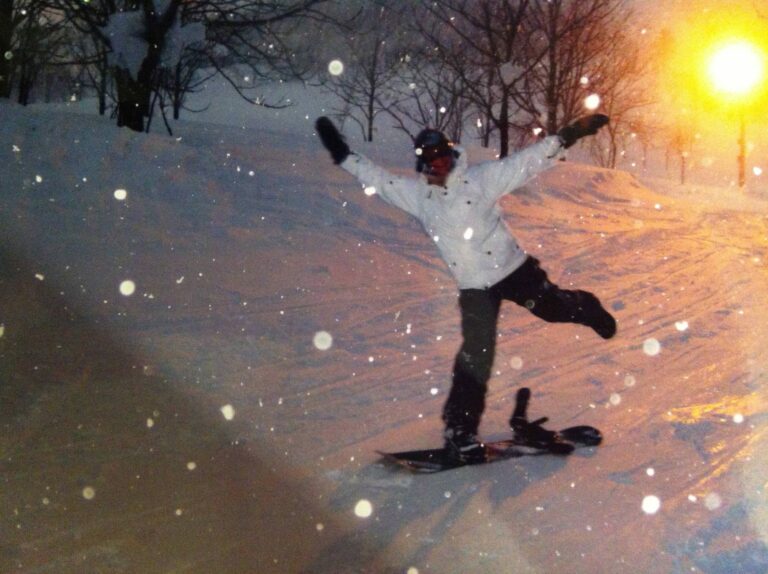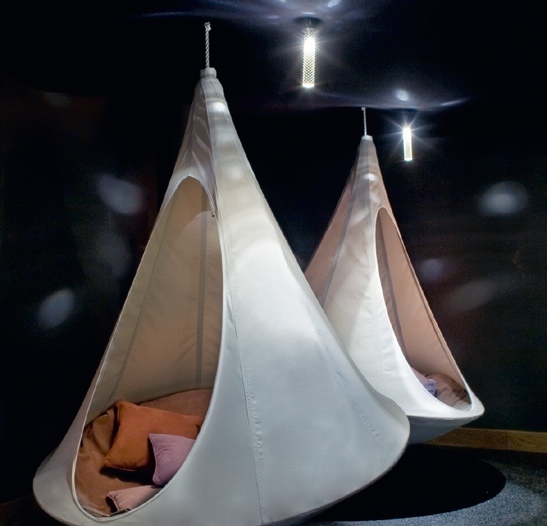Riding all day, partying all night. Winter jaunts can be beastly on the body. Cordelia Brabbs has the best tips, tricks and rescue remedies for staying healthy and happy all holiday long.

How to… beat a hangover
Causes
Those last three shots in the Yeti Bar seemed like a good idea at the time, but now it’s morning and you’re not a pretty sight. In technical terms, your body is trying to handle the toxic chemicals (congeners) in booze and suffering from severe dehydration caused by the diuretic effect of alcohol and a lack of vitamins A, B, C, and potassium. In simple speak, you feel like a piste-basher has parked up on your head, and are working out how long it’ll take to crawl to the toilet to throw up.
Cures
Everyone has their own way of dealing with a hangover (cabbage, eggs, ‘hair of the dog’!) but the main focus should always be rehydration, rehydration, rehydration. Before you even hit the pillow after a big night out have a large glass of water to fend off morning after symptoms. Seasonaires are big fans of Berocca, those effervescent tablets that give a much-needed hit of vits B and C, so take one in a glass of water before bedtime or one when you wake up. Rather than groaning under the covers all morning, brave the fresh air and let nature work its magic. The combination of exercise and altitude can make dehydration worse, however, so don’t hit the slopes without a filled water bottle or camelbak. On a good day you should be knocking back a glass and a half of water for every hour on the slopes. On a hangover morning make it two and a half. Bananas are also great for replenishing lost potassium, but watch they don’t go soggy in your pack!
Rescue Remedies

• Berocca (£4.89 for 15 tablets; www.berocca.com)
• Banana guard (£5.50; www.lakelandlimited.co.uk)
Pro Tip
‘There’s nothing better than the cold mountain air to get rid of last night’s fuzzy red wine head. After a couple of wobbly runs you’ll feel loads better,’ says Rude Chalets owner Helen Lavender in Morzine.
How to… steer clear of accidents
Causes
There’s no avoiding the fact that skiing and snowboarding are dangerous sports, particularly when they involve sharing the mountain with people who are not safety aware, are wobbly beginners, or went overboard on the Glühwein at lunch. As wintersports holidays get cheaper, the mountains get busier, and the risks get higher.
Cures
Be a responsible rider by learning and abiding by the International Ski Federation’s rules of conduct. No matter how good or bad a rider you are, don’t shut yourself off to your surroundings. Using your eyes and ears at all times will help you stay safe on piste. Invest in some anti-fog goggles with all-condition lenses, and turn down your i-pod so you can hear other slope users. Snowboarders should also pay special attention to their blindsides, ‘the turn where you see less clearly,’ says Becci Malthouse, director of the British Alpine, Ski and Snowboard School in Morzine. In Canada and the US, ski patrollers are quick to confiscate ski passes for reckless riding. European ski patrols are getting tighter now too – more reason to stay in control at all times. Most accidents happen at the end of the day or just before lunch, so take breaks when you start to feel tired. Take a mobile or a two-way walkie-talkie with you so if you crash, or witness an accident, you can get help quickly. Don’t forget wintersports travel insurance – and read the smallprint.
Rescue Remedies
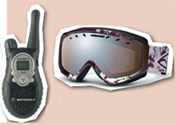
• Motorola Talkabout T5522 Walkie-Talkies (£99.99 a pair; www.motorola.com).
• Smith Phenom Goggles (£80, www.smithsport.com)
Pro Tip
‘Keep your eyes open and think of other people’s safety. Remember that neither you nor the people around you are immortal!’ says freerider Marja Persson, sponsored by Columbia, Fischer and Smith.
FIS (International Ski Federation) Code of Conduct:
1) Respect: Do not endanger others.
2) Control: Adapt the manner and speed of your skiing/snowboarding to your ability and to the general conditions on the mountain.
3) Choice of Route: The skier/boarder in front has priority. Leave enough space.
4) Overtaking: Leave plenty of space when overtaking a slower skier/boarder.
5) Entering and starting: Look up and down the mountain each time before starting or entering a marked run.
6) Stopping: Only stop at the edge of the piste or where you can actually be seen. Never stop below the brow of a hill where you are hidden.
7) Climbing: When climbing up or down, always keep to the side of the piste.
8) Signs: Obey all signs and markings. They are there for your safety.
9) Assistance: In case of accidents, mark the incident area with crossed skis or a snowboard stuck in the snow, provide help and alert the rescue service.
10) Identification: All those involved in an accident, including witnesses, should exchange names and addresses.
How to… avoid injury
Causes
According to ifyouski.com, 50 per cent of mountain injuries are minor, such as muscle strains and bruises. The rest include ouch-inducers like torn knee ligaments, leg fractures, dislocated thumbs and shoulders, and broken wrists. Not all accidents happen on the slopes though. Common injuries take place ice skating, tobogganing and during classic après-ski blunders: falling off the table you’re dancing on, tripping down the steps to the toilet or slipping on the icy streets outside.
Cures
Prevention is best, so get fit well before your trip. Tom Sexton, an exercise scientist at Metis Physiotherapy Centre in London, recommends three months’ focused training to strengthen the body, build muscle endurance and improve core stability and balance. When you’re on holiday, warm up in the mornings by walking to the lifts and begin the day on gentle slopes. Wear head and back protection to cut down the risk of getting seriously hurt. If you do get injured, be prepared to stick it out. Sexton advises r.i.c.e. (rest, ice, compression, elevation) for minor sprains and strains. ‘This stops the swelling and inflammation, and helps speed up recovery time,’ he says. To prevent humiliating après-ski disasters, invest in a pair of rubber-soled shoes with a decent grip, and don’t get so drunk that you fall off a table, down the stairs or flat on the ice, because you’ll have the whole shebang – a hangover, the humiliation and a whole lot of pain – to deal with in the morning.
Rescue Remedies

• Columbia Bugabootoo Boots (£65; www.columbia.com)
• Salomon Mynx Helmet (£35; www.salomonsports.com)
Pro Tip
‘Always train your muscles and warm up before you ride. Do some runs before you hit the park,’ says snowboarder Lisa Filzmoser, sponsored by Helly Hansen, Nikita, Smith and Vans.
How to… beat burnout
Causes
Living by the ‘ride hard, party hard’ maxim for the duration of your holiday is a one-way ticket to sicksville. Arduous physical exercise, copious amounts of alcohol, an unhealthy diet and lack of sleep batter the immune system and leave your body’s defences open to surrender at first sight of a cold or flu virus. Even if you escape a bug, going full throttle will wear you out and slow down your body’s recovery mechanisms if you were to get injured.
Cures
Have the odd night in to give your body a break, and stay off booze for 24 hours following a big drinking session. Try to get seven to eight hours’ sleep as many nights as you can, and keep a regular pattern of waking up at the same time. Take time out with a relaxing hot bath and a DVD, and sprinkle some lavender essential oil on your pillow to help you sleep. You can keep body and soul together by practising a short yoga routine every morning and evening. Take Vitamin C, multi-vitamins and echinacea a few weeks before the holiday to build up immunity. You can also try iron supplement spatone, which combats fatigue and will give you extra energy for the slopes (www.spatone.co.uk). Eat garlic and chilli soup if you feel a cold coming on, or make an infusion of ginger, cloves and cinnamon if you get a sore throat, says nutritionist Lyndon Gee.
Rescue Remedies

• Neal’s Yard Soothing Bath Oil (£9.00; www.nealsyardremedies.com)
• AM and PM Yoga DVD (£12.99; www.gaiamdirect.co.uk)
Pro Tips
‘After you’ve partied through the night get lots of sleep and rest. If the weather’s bad do some other kind of exercise or chill with some DVDs,’ says Lisa Filzmoser.
How to… stay stoked on the hill
Causes
Even the fittest snow bunnies lose power if they don’t keep their energy levels stoked throughout the day. Fatigue and low blood sugar levels happen more quickly at altitude, which is why you need to boost your carbohydrate intake on the hill. ‘If you start to feel shaky this means you are running out of carbohydrate stores, so you’ll need to find a way to get some instant energy,’ says sports nutritionist Becky Stevenson of Pro-Activate.
Cures
As a rough guide, women need an average of 2000 calories a day. Add altitude and a hard day’s riding to the equation, and you’ll need an extra 1,000. For a chilled day on the hill, 350-500 extra calories should do it. Give yourself a head start with porridge for breakfast. ‘It provides slow-releasing carbohydrate that will help to top up blood glucose levels, and provide energy over the course of the morning,’ says Stevenson. For an instant energy boost, pack healthy snacks such as nuts, seeds, dried fruit, oat bars or a banana. If you feel your energy levels dropping and you don’t have food with you, stop and refuel on a hot chocolate. Drinking lots of water is essential for staying stoked, too. ‘Dehydration causes fatigue, which makes it harder for your body to regulate its core temperature,’ says Richard Samuels of Camelbak. If you’re riding all day you’ll need a wholesome lunch, ideally a mix of 70 per cent carbohydrate and 30 per cent protein. Chicken and brown rice, lasagne, goulash or lentil soup are all hearty options, but take a packed lunch if you’re on a budget. Try to eat a carbohydrate- and protein-rich meal within 30 minutes of getting off the mountain. ‘This will help maximise your carbohydrate stores for the next day,’ says Stevenson.
Rescue Remedies

• Eat Natural bars (£0.69 each; www.eatnatural.co.uk)
• Camelbak Snoangel (£31.99; www.zyro.eu.com)
Pro Tip
‘I always have some cereal bars, chocolate and water with me. If my power drops I go to a warm place and drink hot chocolate,’ Ruth Leisibach, three times Verbier Xtreme champion, sponsored by Columbia, Arcus and Electric.
How to… keep warm up high
Causes
You don’t have to be in the backcountry to get caught out by the cold. If you’re not kitted out correctly when the weather turns you could be in trouble sooner than you think. Hypothermia occurs when your body temperature drops beneath 35°c (normal temp is 37°c), and is most likely to happen when you’re exposed to wind. Warning signs are irritation, aggression, confusion, and later drowsiness. Frostbite occurs when the extremities (fingers, toes, ears, nose and cheeks) get so cold that they drop below freezing point. Warning signs are painful coldness, which turns into numbness, and skin that turns pale or white. When frostbite has set in, skin will turn purplish, hard and frozen.
Cures
‘Don’t mess around with your clothing in the mountains,’ warns Dave Whitlow, head of clothing at Ellis Brigham. ‘If you’re two valleys away from home and the temperature drops through the floor, the cotton hoody that looked so cool in the park will have you headed for hypothermia.’ Your jacket is super-important, because it will act as a barrier against the wind, but pile on lots of high-tech layers underneath, as each one will create a pocket of air to trap in body heat. You can prevent 20 per cent heat loss by covering your head, so don’t leave home without a decent hat or warm helmet. Keep extra layers in a pack. If you feel the chills setting in, hide out in a mountain restaurant with a hot drink until you’ve warmed up. If you think you have frostbite, get to a hospital straight away. as soon as the weather turns nasty, keep an eye on your fellow riders, because you’ll probably recognise changes in each other before you recognise them in yourselves.
Rescue Remedies
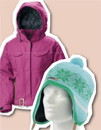
• Columbia Alpine Dish Parka (£180; www.columbia.com)
• Bonfire Cable Knit Beanie (£15; www.bonfiresnow.com)
Pro Tips
‘I always wear technical thermals, and add an extra layer if it’s especially cold. I spent my season in Canada wearing two pairs of thermal leggings every day – it was freezing!’ says snowboarder Gilly Seagrave, sponsored by Protest, Atomic, Gallaz, eka, Crack-Ho and Two Seasons.

